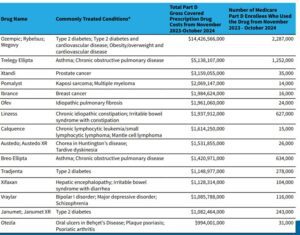Swiss Re foresees rising demand for reinsurance amid increasing global risks

Swiss Re foresees rising demand for reinsurance amid increasing global risks | Insurance Business Australia
Reinsurance
Swiss Re foresees rising demand for reinsurance amid increasing global risks
Giant reinsurer highlights the need for upgraded risk assessment at the Rendez-Vous
Reinsurance
By
Kenneth Araullo
As the insurance industry gathers for the annual Rendez-Vous de Septembre in Monte Carlo, Swiss Re anticipates that rising demand for reinsurance protection will be a central topic of discussion.
Industry conversations are expected to focus on forward-looking risk assessment and capital management, with an emphasis on the need for adequate risk views and effective volatility management in today’s uncertain environment.
Urs Baertschi (pictured above), Swiss Re’s chief executive officer of property and casualty reinsurance, noted that the key issues for the industry have remained largely consistent from last year, though challenges have intensified.
He said that increased natural catastrophe risks, economic uncertainty, and geopolitical instability are driving greater demand for reinsurance. Reinsurance provides insurers with a buffer against large losses, and Baertschi reiterated that Swiss Re is prepared to support its clients with capital, expertise, and tailored solutions.
Property and specialty insurance demand on the rise
Increased property values, urbanization, and higher repair costs driven by inflation are contributing to rising demand for property reinsurance, particularly in regions facing elevated natural catastrophe risks. Swiss Re Institute reported that 2023 marked the fourth consecutive year with global insured losses from natural catastrophes exceeding $100 billion.
So far, 2024 appears to be following a similar trend, with $60 billion in insured losses recorded in the first half of the year, a figure that is 62% higher than the ten-year average.
Demand for engineering reinsurance is also growing, especially in the context of a positive outlook for the construction industry. The expansion of renewable energy projects is a key driver of this growth.
To support the transition to green energy, Swiss Re established a Centre of Competence for Renewable Energy in 2023, providing clients with expertise and products to manage renewable energy portfolios.
The cyber reinsurance market is also expected to continue its growth, as the frequency and sophistication of cyberattacks have increased this year. Efficient management of accumulation risk will be crucial in allowing for proper capital allocation within the sector.
Concerns over US litigation environment
The litigation environment in the US has become a growing concern for the insurance industry. According to Swiss Re Institute, US liability claims have grown faster than economic inflation over the last decade, driven by an increasing number of large court verdicts. In 2023, there were 27 cases in which courts awarded compensation exceeding $100 million.
This trend is expected to continue, and current projections suggest that claims growth could soon outweigh the benefits of higher interest rates on casualty lines. If this occurs, it could result in a reduction of available capacity in the US insurance market within one to two years.
Insurers, corporations, and public-sector entities are increasingly looking for more than just risk capacity from reinsurers. They seek modeling expertise and up-to-date assessments to manage exposures and navigate a rapidly changing risk landscape.
Reliable data flow is crucial to maintaining and recalibrating risk models as new perils emerge or existing ones intensify, such as extreme weather events, rising jury awards in the US, and evolving cyber threats.
Accurate and timely data helps reinsurers provide forward-looking scenarios, ensuring risk-adequate pricing. This will require collaboration across the insurance value chain, according to industry experts. Beyond risk transfer, insurers are relying on reinsurers for insights that help them understand and mitigate risk, foster innovation, and improve operational performance.
Structured reinsurance solutions are also playing an increasing role in capital and volatility management. These solutions offer insurers protection from unexpected volatility while supporting their growth plans by improving capital management efficiency, particularly in the current economic climate.
Gianfranco Lot, chief underwriting officer of property and casualty reinsurance at Swiss Re, emphasized the need for the insurance industry to leverage data more effectively to predict future risks.
He said that while the industry has proven its ability to adapt to a rapidly evolving risk environment, reinsurers must continue helping clients achieve greater precision in managing future risks rather than relying on past data.
What are your thoughts on this story? Please feel free to share your comments below.
Keep up with the latest news and events
Join our mailing list, it’s free!





